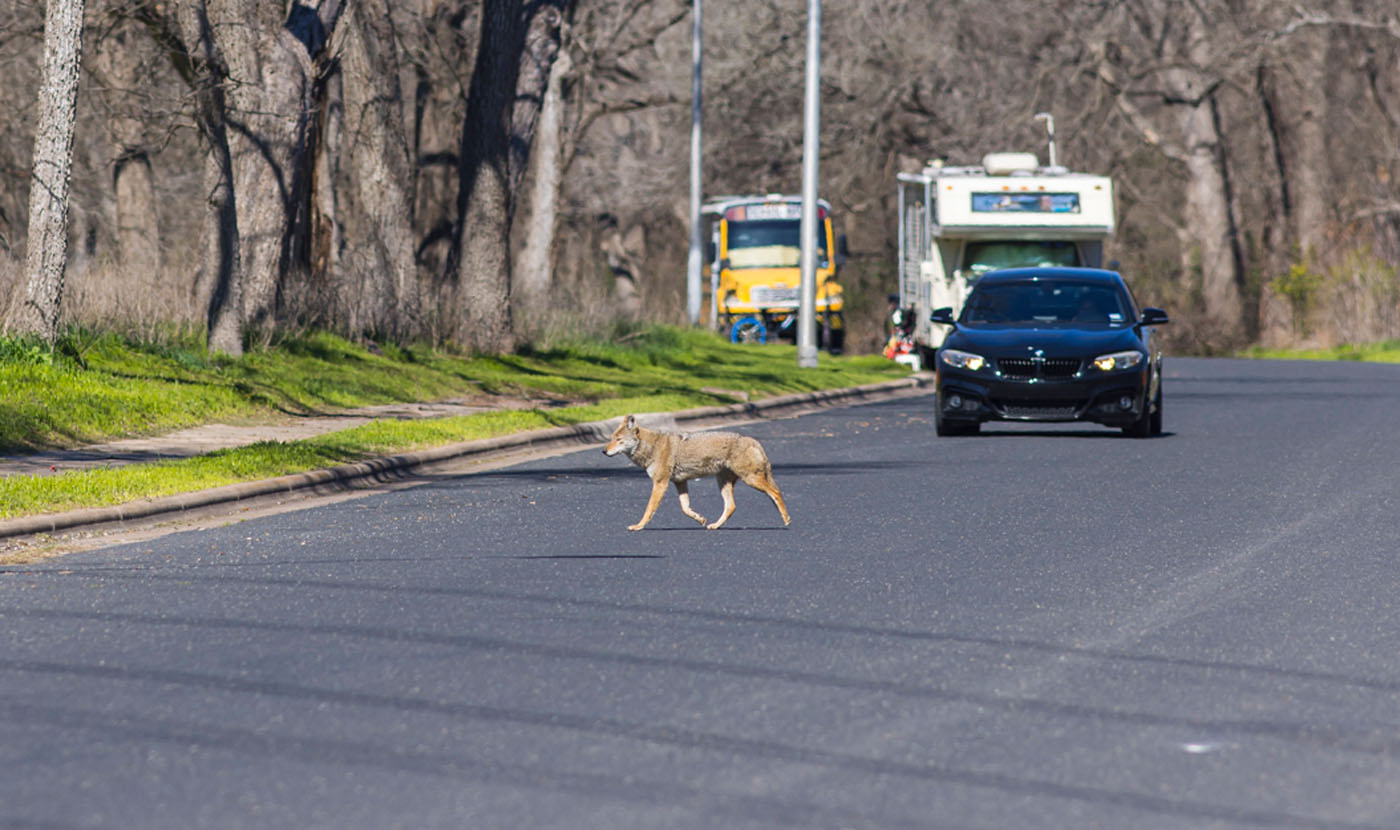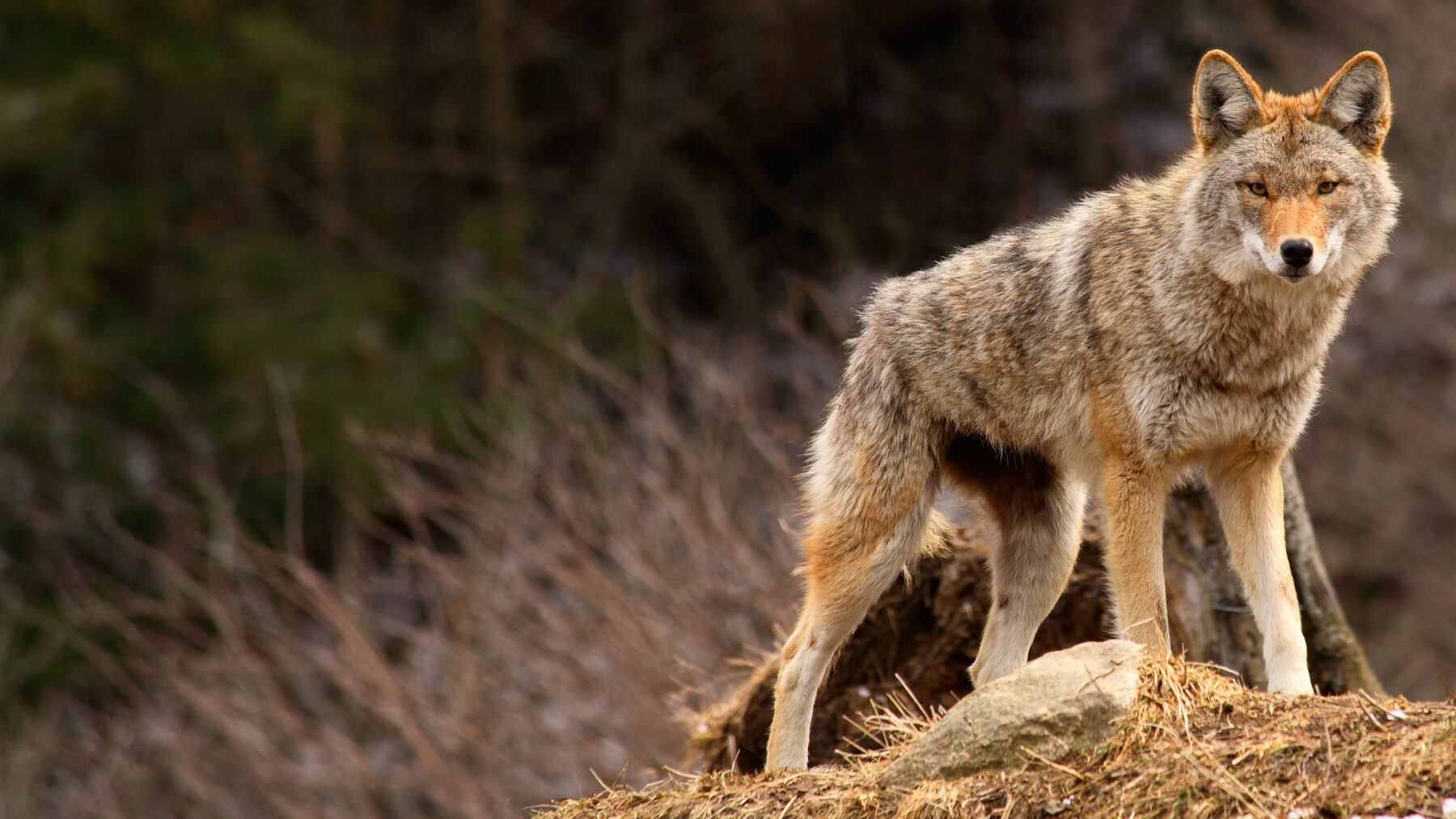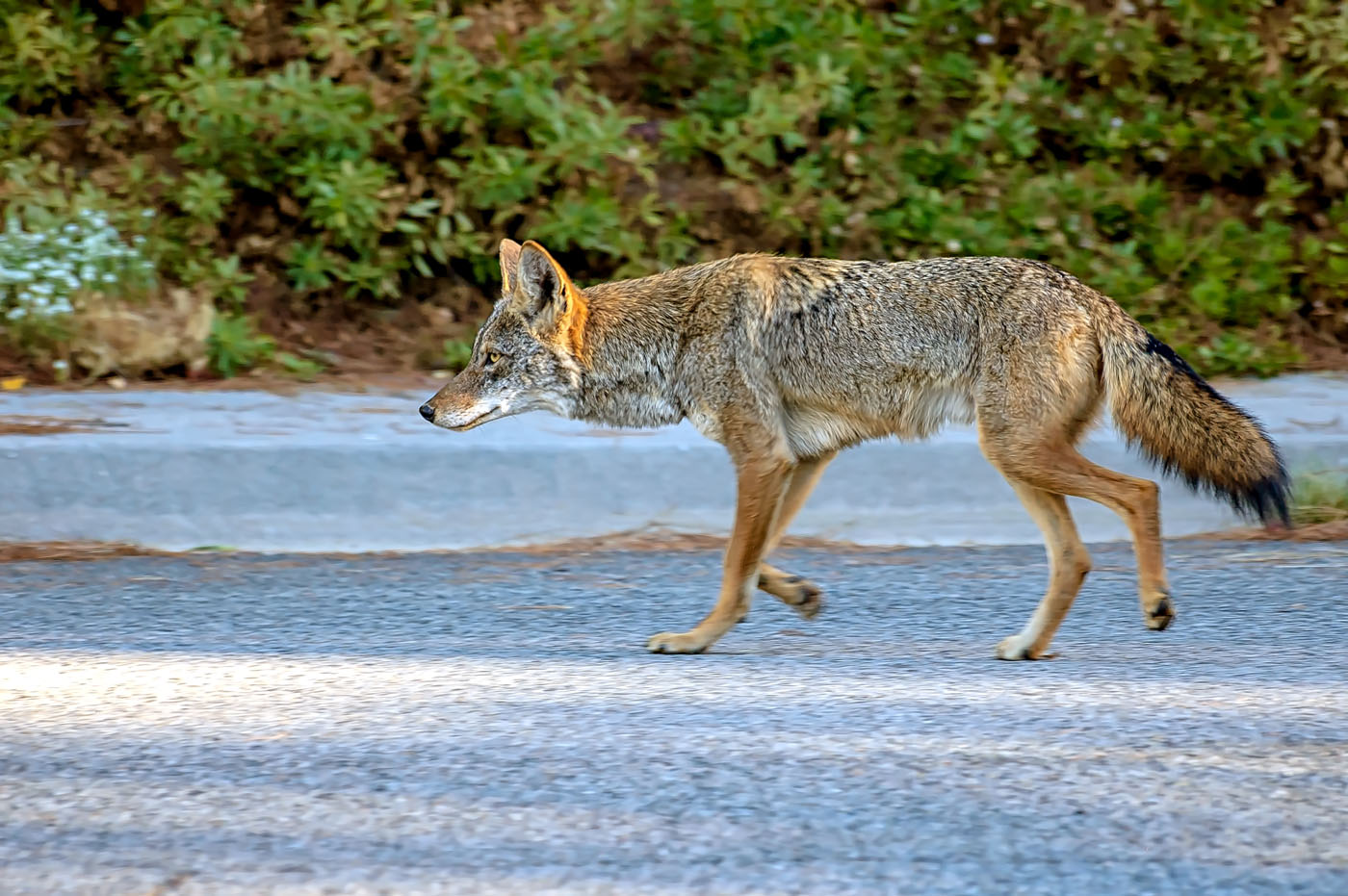Coyotes In America
The Rapid Expansion of Coyote Populations Across the United States

Toward the end of our photoshoot for the Fittest Dogs Issue, we spotted two coyotes casually strolling across the road leading to the dog park at Onion Creek. The sight was stunning and it was fascinating how comfortable they were amidst the commotion often experienced at a public park. One paused for a long minute or two in the middle of the road to take a 360 view of its surroundings. The interaction led our team down a path of learning how they ended up in South Austin. In this article, we delve into the intriguing history of coyotes in America, tracing their evolutionary path, ecological impact, and expansion across the country. For a more in-depth read on Coyotes, please check out Coyote America by Dan Flores.
Coyotes, scientifically known as Canis latrans, hold a significant place in North America’s ecological and cultural landscape. From their origins in the continent’s western regions, these adaptable canids have undergone a remarkable journey, spreading across vast territories and adapting to diverse environments.

Evolutionary Origins
Coyotes trace their ancestry back to the prehistoric era when canids first appeared in North America. The ancestors of modern coyotes diverged from other canid species around 6 million years ago. Fossil records suggest that coyotes evolved from a lineage that also gave rise to wolves and dogs.
The emergence of coyotes as a distinct species occurred approximately 1 million years ago during the Pleistocene epoch. These early coyotes inhabited the western regions of present-day North America, where they adapted to various habitats ranging from deserts to forests.
Native American Perceptions and Mythology
Coyotes have long been revered by Native American cultures across the continent. In many tribal beliefs, coyotes are depicted as cunning tricksters embodying both positive and negative traits. They feature prominently in Native American mythology and folklore, symbolizing intelligence, adaptability, and survival instincts.
Ecological Impact
Coyotes play a vital role in maintaining ecological balance and biodiversity. As opportunistic omnivores, they have a diverse diet that includes small mammals, birds, insects, fruits, and carrion. By preying on rodents and controlling their populations, coyotes help regulate ecosystems and prevent overgrazing, which can lead to habitat degradation.
Furthermore, coyotes serve as keystone predators, exerting influence on the behavior and distribution of other species within their ecosystems. Their presence can influence the behavior of prey animals and shape the structure of plant communities.
Expansion Across North America
The expansion of coyotes across North America highlights their remarkable adaptability and resilience. Historically confined to the western regions of the continent, coyotes began expanding their range during the 19th and 20th centuries, facilitated by human-induced environmental changes and the extermination of competing predators such as wolves.
One of the most significant factors contributing to the spread of coyotes was the widespread eradication of wolves through government-sponsored predator control programs. As wolves were systematically eliminated from many parts of the United States, coyotes seized the opportunity to expand into new territories previously occupied by their larger canine relatives.
Additionally, habitat modification and fragmentation resulting from human activities, such as urbanization and agriculture, created new opportunities for coyotes to colonize diverse landscapes. They demonstrated a remarkable ability to thrive in suburban areas, adapting to human-dominated environments and capitalizing on new food sources.
Adaptations for Survival
Coyotes possess several key adaptations that have enabled their successful expansion across North America. They exhibit high reproductive rates and can breed year-round in response to environmental conditions and resource availability. This reproductive flexibility allows coyote populations to rapidly increase in response to favorable conditions.
Furthermore, coyotes are highly versatile in their diet and hunting strategies, capable of exploiting a wide range of food sources and exhibiting opportunistic behavior. Their keen intelligence and ability to learn from experience make them formidable predators capable of adapting to changing circumstances and overcoming challenges.
Human-Coyote Conflicts
While coyotes play a crucial ecological role, their expanding presence has also led to conflicts with humans, particularly in urban and suburban areas. Encounters between humans and coyotes can result in livestock depredation, pet attacks, and concerns about public safety.
Wildlife management agencies have implemented various strategies to mitigate human-coyote interactions and promote coexistence in response to these conflicts. These include educational outreach programs, public awareness campaigns, and the implementation of non-lethal deterrents to discourage coyotes from frequenting residential areas.

Conclusion
The history of coyotes in America is a testament to their remarkable adaptability, ecological significance, and enduring presence in North American ecosystems. From their widespread distribution across diverse landscapes, coyotes have emerged as iconic symbols of wilderness and resilience.
As we continue to navigate the complexities of human-wildlife interactions, understanding and respecting the ecological role of coyotes is essential for promoting harmony between humans and the natural world. By embracing coexistence and implementing responsible stewardship practices, we can ensure that future generations will continue to marvel at the enduring legacy of coyotes in America.






